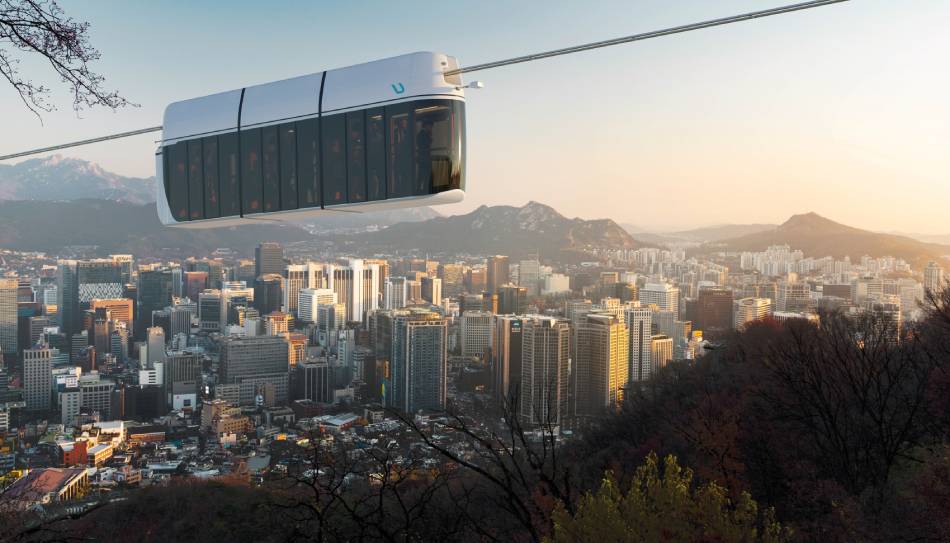Driverless rail transport — train, metro, tram — is actively used in different parts of the world. But the traffic situation and the behaviour of other road users cannot always be predicted. uST complexes can replace automated rail systems and solve issues of speed, safety and traffic jams.

Underground: the trend towards driver forgoing
Metro construction and its automation are financially justified in megacities. The efficiency of using a smart «subway» is increasing in cities with a population of more than 1 million people. And unmanned subways are reducing accidents and increasing traffic-carrying capacity.
- The length of the automated line in Paris — 47 kilometres, in Lille — 33.
- A rail system with a total length of 90 kilometres has been commissioned in the Dubai Metro.
- Istanbul is among the leaders in the number of passengers that a small but popular unmanned branch line is ready to receive every day — 1,629 people.
Meanwhile, there are not many fully automated GoA4-level systems, but it is believed that these are the lines that will be a priority in the near future.
The cost of metro construction depends on the depth of the tunnel, hydrogeological conditions, and the method of attack. The average price ranges from $100 million to $250 million per kilometre.
The launch of a metro line has a significant disadvantage — high cost. The most expensive branch line built through monolithic rock is on Manhattan Island (New York, USA): $1.3 billion for 1 kilometre. In Minsk, a kilometre of branch line now costs about $80 million on average. The uST solutions will eliminate the need for complex underground work.

Challenges of unmanned ground transport
Driverless trams are still less common than automated metro. However, the use of above-ground rail lines — is a favourable solution for the city due to its more affordable price and high carrying capacity compared to metro.
- Building a metro is more expensive than launching a tram line.
- The tramway network – is an urban thoroughfare capable of covering all parts of a metropolis.
- The carrying capacity of the tram is higher than that of trolleybuses and buses.
Rail unmanned trams in test mode may be launched in Moscow as early as 2023. 80% of the tram tracks are segregated for their movement. But experts predict it will take 10–15 years for a complete transition.
The problem is that the launch of commercial transport requires long testing in depot conditions, as well as working out incidents. Unmanned trams run on rails and special markings, and therefore the organisation of a dedicated line is necessary. Land allocation for the rail track reduces the scarce roadway. In fact, trams take away lanes from motor vehicle drivers.
The creation of a new segregated traffic area — is an inevitable transformation of the existing urban infrastructure. But even the organisation of a dedicated route does not exclude crossings with car routes, pedestrian crossings. This increases the risk of accidents and does not guarantee the complete safety of road users and tram passengers.

Second-tier passenger unmanned vehicle
uST solutions allow you to use the unoccupied space. At the same time, the second-tier track organically fits into the infrastructure of the metropolis and does not require large-scale road works. The route is built along the shortest or most convenient path, which reduces travelling time. Safety is guaranteed by the automated control system and the likelihood of accidents is minimised.
uST solutions may be the best option for metropolises for several reasons.
- Under equal conditions, the erection of uST complexes can account for 10 % of the cost of light rail systems construction and 4 % of the cost of organising a metro line. Whereas the carrying capacity of uST transport is comparable to the metro and can reach 50,000 passengers per hour.
- Energy consumption is reduced by 2–3 times compared to steel wheeled or magnetic cushion vehicles.
- There is no need to stop at traffic lights, which reduces the number of braking and acceleration. Accordingly, the average travelling speed is higher than that of the tram.
- For safety reasons on the line and in the compartments, the unmanned unimobiles exchange information between themselves and with the control room in real time.
- The anti-derailment system ensures stability on the track even in difficult weather conditions: icy rain, heavy rain, snowfall, strong winds.
The use of uST complexes is beneficial for all road users. The automated control system adapts the intervals of rolling stock arrival at stations to the peaks and dips in passenger traffic. The movement along the second tier reduces the load on existing transport lines, thereby helping to solve the problem of traffic congestion.

